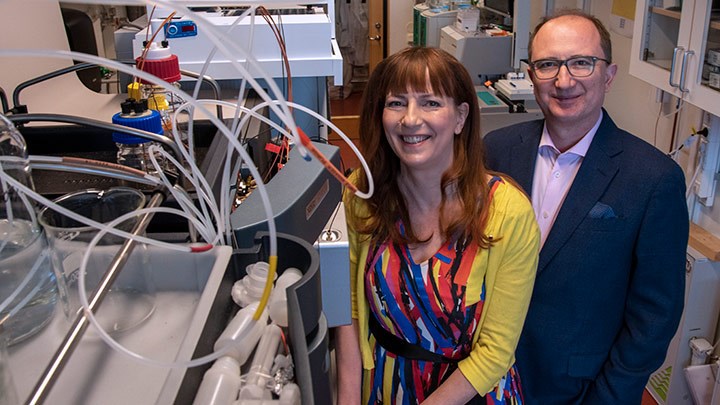“Filling this significant knowledge gap is crucial.”

Tuulia Hyötyläinen and Matej Orešič
EU Commission grants over SEK 78 million to Örebro University-led research project exploring link between endocrine-disrupting chemicals and fatty liver disease.
EDC-MASLD has received funding from the Horizon Europe research and innovation programme of the European Union under Grant Agreement 101136259. In total, the project has been awarded in excess of EUR 6.5 million, equivalent to approximately SEK 78 million, from the EU Commission – of which nearly SEK 18 million is allocated to Örebro University.
Tuulia Hyötyläinen and Matej Orešič coordinate the project with researchers from Netherlands, Germany, Italy, Norway, France, Spain, Finland and the UK.
The project aims at bridging the knowledge gap surrounding the potential connection between endocrine-disrupting chemicals (EDCs) and the initiation of fatty liver disease. Securing an extraordinary score of 15 out of 15 in the evaluation process, its focus is to unravel the intricate mechanisms underlying this critical health concern.
“Filling this significant knowledge gap is crucial. There's substantial evidence suggesting that exposure to endocrine-disrupting chemicals may play a role in the initiation and progression of fatty liver disease, yet the exact mechanisms remain elusive,” remarks Tuulia Hyötyläinen, professor of chemistry at Örebro University.
She is leading the project together with Matej Orešič, Professor of Medical Sciences at Örebro University. The multinational research project includes researchers from 14 institutions across nine countries.
Range of risk factors
Fatty liver disease, once believed to be mainly linked to alcohol consumption, has shown a diverse range of risk factors, such as obesity and exposure to various environmental factors, including harmful environmental chemicals.
“With an estimated 25 percent of Sweden's population affected by the condition, the research is of paramount importance.”
The project centres on metabolic dysfunction-associated steatotic liver disease (MASLD), formerly known as non-alcoholic fatty liver disease, specifically investigating the role of chemicals, with a keen focus on EDCs.
Prior research by Örebro scientists demonstrated the disturbance of fat and glucose metabolism by certain environmental pollutants classified as EDCs. However, the puzzle is far from complete.
“Our journey seeks to uncover whether EDCs are initiators of liver damage or rather exacerbate the progression once the damage has begun,” explains Professor Hyötyläinen.
Insights to reduce exposure
Aiming for a comprehensive ‘exposome’ perspective, the EU project will analyse the impact of exposure to EDCs, including their mixtures, on the initiation and progression of MASLD as well as on related health outcomes such as type 2 diabetes and cardiovascular disease, accounting for variables such as sex, genotype, gut microbiome, diet, socioeconomic status, and various other lifestyle factors.
The project draws from data and samples provided by a European registry of over 9,000 patients. The studies in humans will be complemented by toxicological screening and mechanistic studies in various experimental models. The project will work closely with the European Partnership for the Assessment of Risks from Chemicals (PARC), to provide information about the links between specific EDCs and MASLD.
Beyond unravelling the link between EDCs and fatty liver disease development, the research seeks preventive measures.
“Our goal extends beyond research – we intend to provide actionable insights to reduce exposure. While legislation is essential for safeguarding human and environmental health, our findings will empower individuals to minimise risks,” underscores Professor Matej Orešič.
